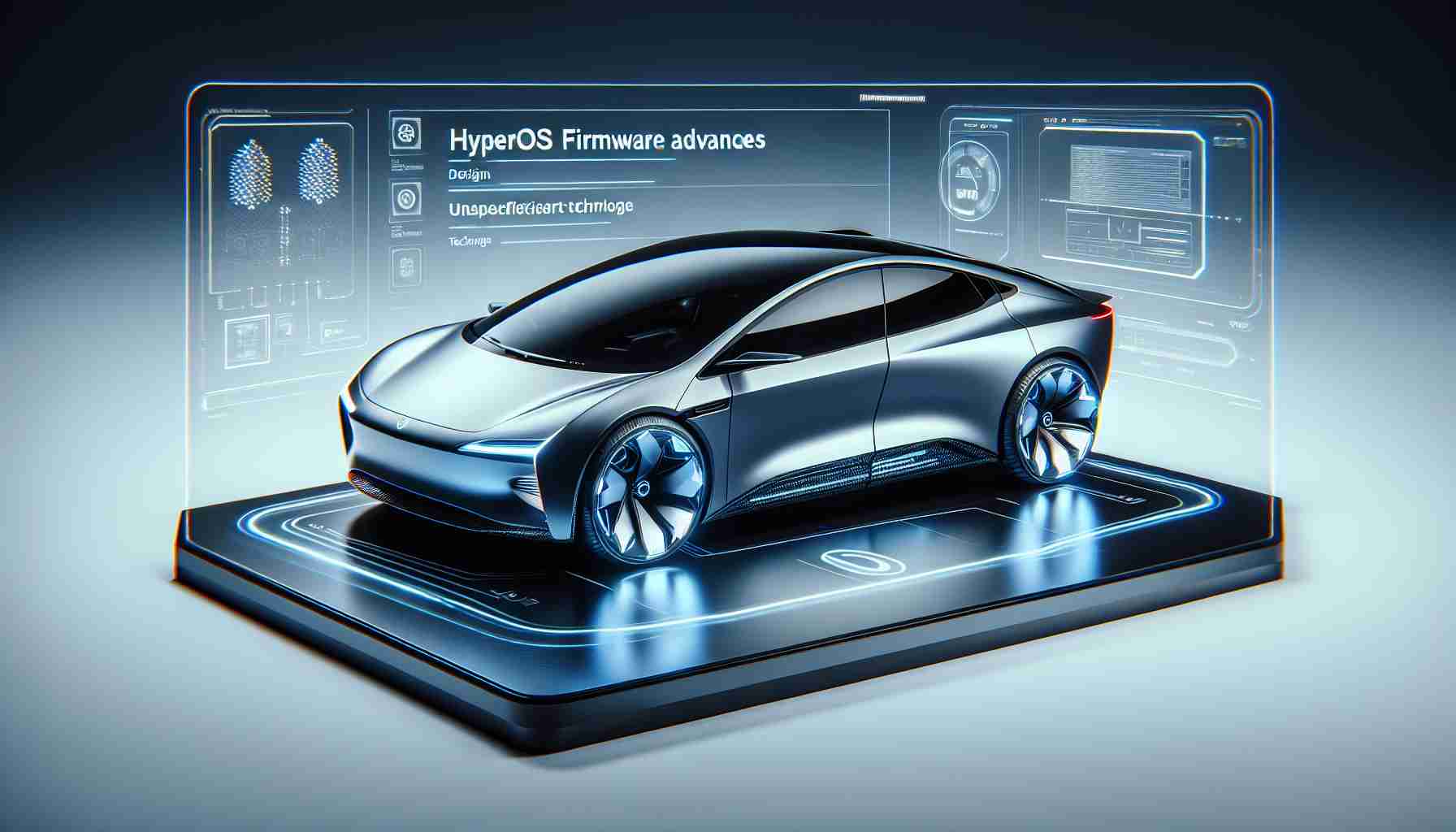Xiaomi, the renowned electronics company, has made a noteworthy leap in electric vehicle support by releasing the initial firmware update for its latest electric car model, the Xiaomi SU7. The recent deployment of HyperOS 1.0.12 heightens the functionality of the state-of-the-art vehicle, proving Xiaomi’s serious commitment to its automotive venture, once known primarily for smartphone technologies.
Enhancements for the Electric Commute
The firmware addresses several critical points to ensure a smooth ride for SU7 owners. One update improves the ease of access by fixing a glitch that previously hampered the electronic door lock from disengaging with the charge gun button under certain conditions. Furthermore, it brings improved charging protocols, enhancing the vehicle’s compatibility with a broader range of external chargers.
Users can also expect an improved noise cancellation experience, as the update aims to eliminate a rare fault that could disrupt this feature upon entering the vehicle.
Upcoming Features That Excite
Xiaomi isn’t stopping there; they are gearing up for a more remarkable update with HyperOS 1.1.0. This version, anticipated for release in early May, promises to revolutionize the in-car experience with wireless CarPlay support, remote control parking, a beta city pilot for urban driving, and a valet service program. These upcoming features signify Xiaomi’s bid to place itself at the forefront of car technology innovation.
In celebration of their rapid progress, Xiaomi announced a production milestone, with the 10,000th SU7 rolling off the production lines within just over a month of its introduction. This milestone follows the immense interest showcased at the Beijing Auto Show, marking the entry of Xiaomi as a potent contender in the electric vehicle market.
Xiaomi’s release of HyperOS firmware for their electric vehicle is indicative of the company’s broader strategy to diversify its product offerings beyond consumer electronics like smartphones and smart home devices. Their entry into the electric vehicle (EV) market aligns with global trends of increased EV adoption due to environmental concerns and the pursuit of sustainable technology.
Most Important Questions and Answers:
– What is HyperOS? HyperOS is the firmware developed by Xiaomi for their electric vehicles. It encompasses the software that controls various vehicle functions and the user interface experience.
– Why is firmware important for electric vehicles? Firmware updates in electric vehicles are essential as they can improve the car’s performance, fix software-related issues, enhance security, and add new features which are crucial to maintaining and improving the user’s in-car experience.
Key Challenges:
The EV market is highly competitive, with established players like Tesla and traditional automotive manufacturers who are rapidly transitioning to electric. Xiaomi must differentiate itself through technology, reliability, and customer experience. Additionally, the emergence of new software systems like HyperOS must integrate flawlessly with existing automotive standards and charging infrastructure.
Controversies:
Privacy and data security are potential issues, as connected vehicles can generate vast amounts of data. Users may have concerns about how their data is handled and protected. Additionally, the environmental impact of battery production and recycling is an ongoing debate within the EV industry.
Advantages:
Releasing firmware updates like HyperOS 1.0.12 can fix immediate issues and prepare the ground for future enhancements, leading to a better and more efficient driving experience. Frequent updates can also keep vehicles modern over time, potentially extending their lifespan. Moreover, Xiaomi’s technology background may provide an edge in developing advanced in-car software features.
Disadvantages:
On the downside, the need for frequent firmware updates may be seen as a lack of readiness at launch. Continuous reliance on digital updates may also introduce new bugs or security vulnerabilities if not managed properly.
For those interested in learning more about Xiaomi or keeping up with the company’s latest advancements, consider visiting Xiaomi’s official website:Xiaomi Official. Please note that to explore specific pages or products related to Xiaomi’s EVs, you may need to navigate from the homepage to the relevant sections as direct links to subpages were not provided.
